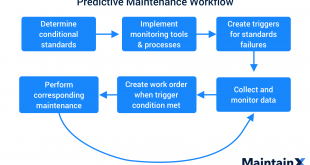“The rapid evolution of small unmanned air systems (sUAS) technologies is fueling the exponential growth of the commercial drone sector, creating new asymmetric threats for warfighters. sUASs’ size and low cost enable novel concepts of employment that present challenges to current defense systems. These emerging irregular systems and concepts of …
Read More »Stealth ships
A stealth ship is a type of ship which is especially used as a war vessel and is concealed from the navy vessels of other countries. It is an important warfare tactic that is used by nations wide across the world. Since they are invisible but the opposite navy vessels …
Read More »Armies Investing in Predictive Maintenance Technology
Logistics is often referred to as the “sinews of war”, linking forward-deployed units with support elements to ensure they are supplied, maintained and ready for the next operation. There is a saying in military circles – made famous by US Marine General Robert H Barrow – that amateurs study tactics, …
Read More »Chemical/Biological Threat to Air Transportation
Historically, most terrorist attacks on civilian targets have involved the use of firearms or explosives, and current defensive strategies are aimed at preventing attacks perpetrated by such means. However, the use of the nerve agent sarin in 1995 to attack the Tokyo subway system, the use of the U.S. mail …
Read More »DARPA AWE to provide Drinking Water extracted from Air , on Demand to soldiers in battlefield
It is estimated that around four billion people on the globe suffer from water scarcity. Distribution and production of fresh water and the control over water sources are potential cause for conflicts. Therefore, researchers are investigating new ways of freshwater production and the improvement of existing techniques. Potable water …
Read More »Marine Communication involves Secure ship-to-ship and ship-to-shore communications
Globalization has opened the doors for trade across the world and it has thus become necessary for ships to be equipped with the latest forms of communication and technology. Communication is vital for the safe navigation and management of ships. Marine communication involves ship-to-ship and ship-to-shore communication. Cell phones are …
Read More »DARPA EDGE enabling Human Control of Military Autonomous and AI based systems
Interactions with technologically sophisticated artificial intelligence (AI) agents are now commonplace. We increasingly rely on intelligent systems to extend our human capabilities, from chatbots that provide technical support to virtual assistants like Siri and Alexa. Examples of such systems include air traffic control, aircraft cockpits, chemical processing, and the power …
Read More »Soft Recoil Technology
Artillery weapons have been used for hundreds of years. These weapons have been continuously developed to improve accuracy, effectiveness, and efficiency. When an artillery weapon is fired, the energy of the round must be absorbed by the weapon’s structure and eventually transmitted to the ground. The recoil system is …
Read More »China’s Military-Civil Fusion strategy boosting its technological and Military Innovation and Defence preparedness
China is making rapid advancements in many technologies thus narrowing its gap with the western world. Former US energy secretary Steven Chu has even observed that China is ahead of America in areas ranging “from wind power to nuclear reactors to high-speed rail”. China is also catching up fast in …
Read More »Modern Air Warfare and Air Domain dominance
Over the past century, exploitation of the air domain’s speed, vantage, maneuverability, flexibility, and range changed the nature of warfare. Militarily, operating in the air domain provides hypersonic speeds, vantage: the ability to see not only over the next hill but also over the horizon. It provides maneuverability unencumbered by mountain …
Read More » International Defense Security & Technology Your trusted Source for News, Research and Analysis
International Defense Security & Technology Your trusted Source for News, Research and Analysis








